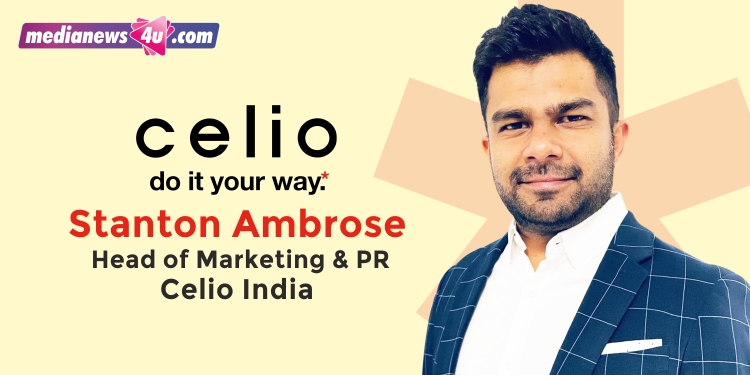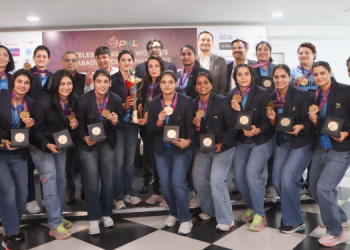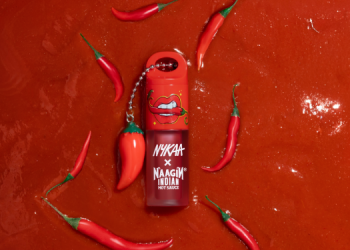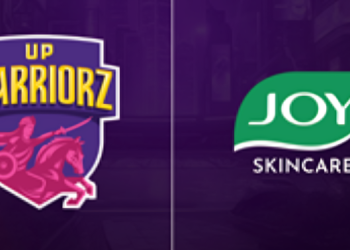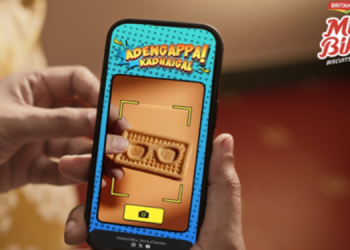When did Celio enter the Indian market? How has it grown in terms of size and geographic presence?
Celio entered the Indian market in 2008. It has been 15 years. In terms of geographical presence, 50 pc of our business comes from South India, which is followed by West, which is around 29-30 pc, North is around 14 pc, and the rest is East. We are very prominent in the South, and it has to do a lot with the products we offer. We are a brand that’s known for linen shirts and jeans. If you look at the South market, they prefer a lot of shirts in linen. Our first concept store was opened in Hyderabad. East is also a key market for us, we do have plans for East, but not immediately.
You launched a concept store in Lulu Mall, Bangalore, last week. What is the idea behind it? Which other cities does Celio India plan to launch concept stores in?
A few days back, we launched our concept store in Bangalore, and in Pune last week. In the next three months, we are planning to launch four more stores. Shop-in-shop model is also growing for Celio India, specifically in smaller cities, because there has been a lot of growth and expansion, and even percentage of change of growth is much more there. The purchasing power is also higher in these cities.
How is the brand positioned, which TG does it address?
We are focusing on younger audiences and are targeting GenZ and Millennials. The core audience of Celio India is in the 16-26 years age group. We, though, have shoppers right up to 45 years. That’s because, as mentioned earlier, linen shirts and jeans are our strength. We have licensed collections that have been launched in the last two years. We have done a lot of research on the likes of younger audience, and we have tied up with Naruto. Earlier, we had collections inspired by Stranger Things, Money Heist. These collections appeal to the younger generation, especially the GenZ audience. We are very simplistic in our brand personality.
The brand seems to be perceived as premium. Is that by design? What is the entry price point? What is the average ticket size?
The average ticket size is Rs 6200. Our entry price point for some of our T-shirts is Rs 999. We have shirts in the range of Rs 1,999, pants at Rs 2,299, and jeans at Rs 2,499. Our linen shirts start from Rs 2,499.
A lot of our designs come from France, but we work on designs to cater to the Indian market. We have Indian designers who design specific collections, such as, say, for the festive season. We have launched a very special range of festive shirts recently. Of late, shopping is not just restricted to the festive season, whether it is parties or get togethers, people opt for casual wear. Festive season has become not just about Indian wear, but about casuals as well.
What are your expectations from the festive season?
The second half of the year contributes much more to the business due to the festive period. Over the last few months, we are seeing growth, but it is not as charged as expected. We are hoping for substantial growth in the next few months.
Why doesn’t Celio play up its French origin?
Sometimes, our customers are not aware of our French origin. We launched a campaign a few years back where the communication was originally positioned as ‘Originally French’, letting consumers know that we have origins in France. In most of our communications, be it on CRM, SMS, or e-mail, we make sure that we specify our French origin. Having said that, we are in India and we want to make sure that the Indian consumers relate with us. But we are not underplaying the origin. Whenever we have the opportunity and platform, we make sure that we are specific about our French origin.
In India, what is the share of online and offline sales for Celio and how is this changing? Within online, how much do marketplaces contribute and what is the share of your own site? Is the split shifting?
Offline vs online would be at 95:5 ratio. That’s growing as we speak. We see the younger audience shop online. After the pandemic, we have seen a lot of mature audience shifting from offline to online shopping. We are witnessing growth, and it is going to increase. Of the 5 pc of online sales, 1.5 pc is from our own website and rest is from other portals.
What are the plans to ramp up standalone stores from the current number of 60? Which cities are these in and what new locations will you target? Are these owned or franchised? You are said to be in many MBOs. What are the expansion plans?
Yes, the current number is 60, and in the next few months we will be opening four more stores. The stores are a mix of owned and franchised. The Shop-in-Shop is growing tremendously. There are a lot of new malls coming up, and we are looking at these places. In North, specifically Uttar Pradesh, we are looking to grow tremendously. That’s the region where we see a good amount of growth after South. In terms of MBOs, we are at 550 stores. We have expansion plans there as it is easier to open because its smaller and already ready.
Our profitability in shop-in-shop is faster as there are lesser costs involved and footfalls are higher.
What is the retail presence in metros vs tier 1 and tier 2 cities? Also, how do you define tier 1 and tier 2?
We don’t have a different definition in terms of tier 1 and tier 2. We have around 60 stores and 25-27 stores would be in Metros.
What is the online sales split between metros and tier 1 and tier 2 cities?
Metro sales contribute more to the business in terms of online as well. In non-metros, people prefer to have that touch-and-feel shopping experience.
Celio has been associated with the IPL team Mumbai Indians for a few years now. What was the rationale and how has the association worked for Celio?
The main reason why these associations happen is to garner younger audiences. Why we chose cricket is that it’s a huge part in the lives of Indians. IPL has a huge following, and Mumbai Indians has a huge fan base. We sensed a good opportunity there. We created a collection with the Mumbai Indians. In India, if the brand personality matches and something can be done associated with cricket, it’s always a win-win. We saw a spike in business. It wasn’t just about people purchasing Mumbai Indians’ merchandise, but it was also a huge opportunity for the other products of Celio. When these associations happen, people visit the stores and they might end up purchasing something extremely different along with the merchandise.
What has been the marketing approach and are we seeing a push of late? Would it be right to say that only now have we seen high decibel advertising from the brand?
One of our key focuses is to get younger audiences. We can’t just market the products to the younger audience and not to do anything with the products. Hence, we have launched products that cater to their fashion needs. Even in our communication, we make sure that we are in spaces where the youth and younger audience is present. Where the media is concerned, we make sure we are present and relevant to our TG. As a majority of our customer base is young, digital mediums become a key focus and contribute towards a maximum part of our media. OTT, social media and entertainment apps is where Celio parks a majority of its media spends along with a strong on ground presence of outdoor and in mall branding.
The brand also connects with customers via influencers that create content matching the brand personality, and have impact on the consumers. The last campaign ‘Do it your way’ had Emiway Buntai, Ranveer Allahbadia, Umran Malik and Naaman create a rap song that resonated with the philosophy of the brand which emphasized on the fact that everyone can achieve their goals and success their own way. We have used the print medium in a minimum way in the past, and we believe it is a substantial medium for us, especially in smaller cities. We will continue to speak to our audience, but in future we make sure that the style aspect is at the forefront.
Are developments like unisex fashion a niche, or does it have a sizeable base? What are the consumer trends you see in the fashion space?
Unisex merchandise is no longer a niche as trends are now very gender fluid and appeal to a larger audience. A lot of the newer trends are sported by men and women. In fact, many brands that started off creating merchandise for a specific gender now promote unisex merchandise as well. All over printed shirts, varsity Jackets and tie-and-dye are some of the key trends for the season. Celio has a wide range of printed shirts that are specially curated for the festive season.
In June, Celio entered the Metaverse with rapper Emiway Bantai and launched an exclusive collection. How has been the consumer reaction to the initiative?
Celio always strives to innovate, whether it is with product, design, technology or marketing. With consumers engaging more in the digital and virtual world, we felt it would be a great way to showcase our new collaboration on the metaverse. The trendy collection was a collaboration with one of the best rappers in the country – Emiway Bantai. We saw a huge traction on the day of the launch. This has also helped to get a lot of traffic on the website and witnessed the biggest spike in followers on Instagram.
Celio has a licensed collaboration collections like Do it Your Way, DragonballZ, Garfield. How much does the category contribute to the brand sales?
The licensed collections contribute 7 pc of the total business and this number is increasing month-on-month. Consumers have been liking the collaborations as it gives some freshness to their wardrobe. These collaborations attract the customer to the brand as there is a lot of loyalty with key license collections which helps to gain new customers to try out the brand.
Feedback: [email protected]

